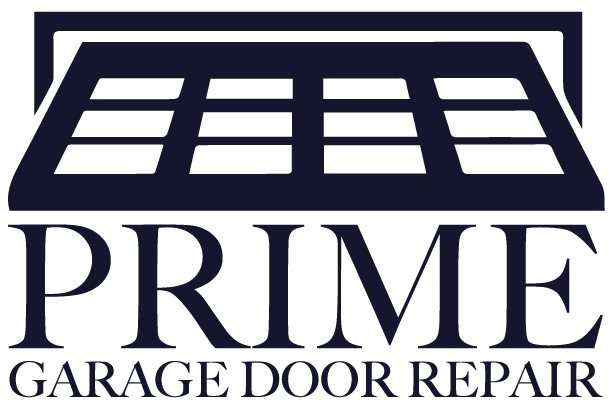Understanding Your Garage Door Track System
Underneath the humble exterior of your garage door exists an impressively complex system. The core of this remarkable infrastructure is the garage door track system, which essentially carries the weight of operations. This track system is responsible for the smooth movement of your garage door, running it up and down flawlessly. At its basic, the system is a set of tracks – vertical and horizontal – that guide the door using rollers. And as much as it may seem straightforward, the nuances of this system are a thing of marvel, with each part seamlessly integrated to offer unparalleled performance.
The vertical tracks on either side of your garage door ensure the seamless rolling of the door when it goes up or down. These metal tracks, typically constructed from sturdy galvanized steel, are on the front lines of wear and tear.
The horizontal tracks, on the other hand, hold the door when it’s fully opened, in what’s called the retracted position. The curvature or radius track, in coordination with the horizontal track, controls the door’s transition from its vertical track to the horizontal.
Every component of this track system is critical, with any malfunction throwing the system into disarray, leading to a haphazard, sometimes dangerous movement of the door. To maintain efficiency, you need to prioritize the health of these parts, regularly checking for any visible signs of distress. From alignment issues to general wear and tear, preventive care can go a long way in keeping your garage door track in top shape.

Why Alignment Matters in Your Garage Door Tracks
Alright, let’s talk garage door tracks. Now, you won’t notice these things until something goes awry. One of the main players in the smooth operation of your garage door system is the alignment. Simply put, alignment is a big deal, an absolute must. When the alignment of the tracks is off, it can cause problems. This could range from your door refusing to close or open correctly to the door going off track entirely.
Worse yet, your door could get stuck, leading to potential damage and subsequent costly repairs. Let’s not forget that it could even harm anyone standing close to or under it. Unevenly aligned tracks could also cause your garage door system to work harder, putting undue strain on the components and shortening their lifespan. So, you see how alignment could be a silent lifesaver or expensive troublemaker, depending on whether it’s done right or not.
Dealing with a Noisy Garage Door Track
Have you ever found yourself startled by the loud grating noise from your garage door track? Well, good news, it’s not a ghost! More often than not, a noisy garage door track is a tell-tale sign of poor lubrication or some mechanical part crying out for some TLC. Typically, metal-on-metal contact or friction between moving parts is the leading cause. So, it’s not rocket science to figure out the noise will be notably reduced once you ensure good maintenance and adequate lubrication. Now, you won’t have to wince every time you open your garage!
However, if the noise persists even after basic maintenance and it sounds like a chainsaw massacre, it could signal something more serious. It could be an alignment issue, loose hardware, or worn-out components – all of which make a squeaky symphony! Prolonged usage without maintenance or exposure to harsh weather conditions could cause such issues. Hence, it’s crucial to tackle these problems early.
Moderate rust or minor misalignments, if ignored, can escalate into major problems, ensuring your door doesn’t roll smoothly anymore! Now imagine that: an angry garage door groaning every morning, not the ideal wake-up call, is it? Regrettably, in some cases, lubrication may only offer a temporary fix. The noise could be a sign for you to dive deeper into the situation. So, it’s always wise to keep an eye, or ear, out for prolonged or unusual noises from your garage.
Preventing Rust and Corrosion on Your Garage Door Tracks
Prevention is always better than cure, and that doesn’t just apply to your personal health but also to your garage door tracks! Rust and corrosion can significantly reduce the lifespan of your garage door tracks, leading to potential damage and costly repairs. Regular maintenance and proactive measures can keep these common issues at bay. By vigilantly monitoring for signs of rust and corrosion and taking immediate action when they appear, you can keep your garage door rolling smoothly for years to come, reducing the chances of encountering unexpected hitches.
You want your garage to be a sanctuary for your vehicle, not a trap waiting to spring a malfunction on you. Prolonged exposure to moisture and humidity is one of the leading causes of rust and corrosion, a nightmare for any metal-based mechanism. To combat these issues, consider weatherproofing your garage, especially if you live in regions prone to heavy rain or fluctuating temperatures. Regularly applying a silicone-based lubricant to the tracks can also minimize friction and deter rust formation.
Furthermore, wipe your tracks clean at least once a month to prevent dust build-up, which can trap moisture and contribute to corrosion. In the long run, these simple steps can save you a ton of time and money, keeping your garage door in excellent condition.
Ensure Your Garage Door’s Longevity with Professional Maintenance
Don’t wait for the screech and grind of your garage door to disrupt your day! The intricate system of tracks and rollers that powers the smooth operation of your garage door deserves your attention. From ensuring proper alignment to prevent hazardous malfunctions to addressing the eerie symphony of noises that could signal deeper issues, taking proactive steps can significantly impact your garage door’s performance and safety. The best step you can take is to contact us today at Prime Garage Door Repair for our expert services.

